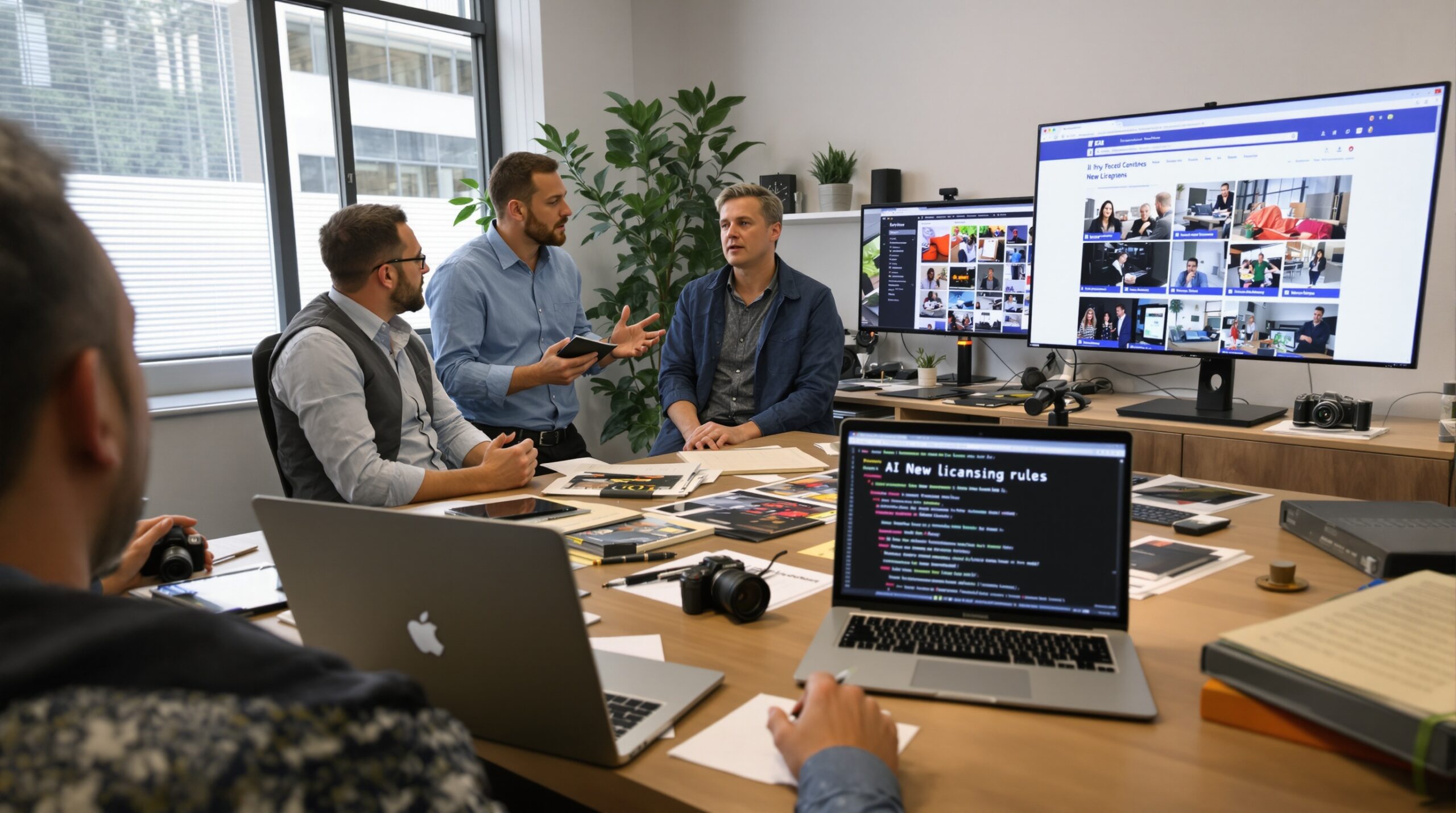Open-source image generators have accelerated the pace of visual creation. Photographers and designers now face new competition from algorithms. Agencies feel pressure as clients test prompt-based workflows. Markets adjust as licensing frameworks evolve to address uncertainty. The transition reshapes pricing, provenance, and risk allocation across the ecosystem.
A wave of open-source tools lowers creation costs
Stable Diffusion popularized open-weight image generation for mainstream creators. Subsequent community models improved resolution, control, and style fidelity. These tools run locally or in low-cost clouds. Creators can fine-tune models on small datasets. That flexibility enables niche content that stock libraries once dominated.
Open-source options reduce barriers for experimentation. Contributors use ControlNet, LoRA, and upscalers to refine results. Plug-ins streamline integration with design software and pipelines. Small teams now produce targeted visuals at minimal marginal cost. That shift reduces demand for generic stock imagery.
Workflows also change buyer expectations. Art directors iterate faster and test multiple compositions. Storyboards emerge in hours rather than days. Budgets shift toward prompts, editing, and brand adaptation. These efficiencies pressure traditional licensing models and supplier margins.
Stock agencies react with new rules and product launches
Agencies have responded with policy updates and platform features. They balance contributor protection with client demand for AI. Rules clarify what content they accept and indemnify. New labeling and review processes support compliance. These changes signal a broader industry reset already underway.
Shutterstock’s contributor fund and training partnerships
Shutterstock integrated generative tools and established a contributor fund. The fund compensates contributors whose content helps train partnered models. Shutterstock also partnered with OpenAI and other providers. The company licenses data to model developers under agreements. It pays contributors through revenue sharing from those arrangements.
Platform policies restrict disallowed subjects and trademarked elements. Review teams evaluate AI submissions for quality and compliance. Shutterstock provides model indemnification for select in-platform generations. These assurances address enterprise risk concerns. They also encourage adoption within brand-safe workflows.
Adobe Stock’s acceptance rules for AI submissions
Adobe Stock accepts generative images under specific conditions. Contributors must label submissions as generative AI. They must avoid logos, private properties, and identifiable people without releases. Metadata standards and accurate tagging remain required. Reviewers enforce quality and suitability before publication.
Adobe advances provenance through Content Credentials. The system attaches tamper-evident metadata to supported media. Many Creative Cloud tools support this feature. Buyers gain context about an image’s origin and edits. That transparency supports responsible use across commercial workflows.
Getty Images’ indemnified generator and restrictions
Getty Images launched an indemnified generator trained on licensed content. The product offers enterprise assurances and clear rights. Getty has restricted uploads of unlicensed AI images on its marketplaces. It emphasizes lawful training data and contributor compensation. The company also supports provenance initiatives and disclosure practices.
These moves reflect broader risk management priorities. Agencies seek to limit downstream infringement exposure. Clients value indemnification and predictable licensing terms. Contributors want fair participation in data licensing revenues. The policies attempt to balance these competing interests.
Copyright, authorship, and evolving legal guidance
Legal frameworks continue to develop across key jurisdictions. Courts and regulators address authorship and training questions. Outcomes shape how agencies structure policies and warranties. Buyers monitor risk while adopting efficient tools. The landscape remains dynamic and closely watched by practitioners.
US Copyright Office positions on AI authorship
The US Copyright Office states that copyright protects human authorship. Works generated solely by a machine lack protection. Filers must disclose AI-generated elements during registration. Examiners assess the human contribution and creativity. Guidance continues through policy statements and ongoing inquiries.
Court decisions support these principles. A case rejected a registration listing an AI system as author. Judges emphasized the requirement for human creativity. Hybrid works may receive protection for human-edited components. Agencies align contracts to reflect that framework.
Lawsuits shaping the training debate
Litigation addresses training on copyrighted images without permission. Getty Images filed lawsuits against Stability AI in multiple jurisdictions. Visual artists also brought class actions regarding training practices. Courts have allowed some claims to proceed. Other claims faced dismissals or amendments.
Outcomes may clarify fair use and data licensing boundaries. They could influence model developer agreements with agencies. Stock platforms monitor these cases while updating practices. Buyers rely on indemnified tools during uncertainty. The disputes highlight the value of transparent sourcing.
Transparency, provenance, and model disclosure requirements
Regulators increasingly emphasize transparency for AI systems. The European Union adopted the AI Act in 2024. Providers must disclose certain information about training data and capabilities. Copyright rules require honoring opt-outs from rightholders. Agencies incorporate these obligations into contributor terms.
Provenance standards help verify media origins. The C2PA specification supports secure metadata for images and video. Major companies participate in related initiatives. Agencies experiment with provenance labels on listings and downloads. Clients value audit trails during content review and clearance.
Disclosure practices extend to prompts and editing histories. Some tools record generation parameters within metadata. That information aids internal compliance checks. It also supports investigations when disputes arise. Clear records reduce uncertainty for licensors and licensees alike.
Economic impacts across buyers, contributors, and agencies
Open-source tools lower creative costs for common use cases. Demand shifts away from generic stock imagery. Buyers still license unique, brand-safe, or timely content. Editorial and news coverage retains distinct value. Contributors adapt portfolios toward specialized and authentic subjects.
Agencies diversify revenue through subscriptions and generative services. They monetize data licensing for model training. They also package indemnification and compliance features. New rules enforce quality control and rights checks. These offerings differentiate platforms as competition intensifies.
Price pressure persists across commodity categories. Generative assets flood marketplaces with similar concepts. Curation and ranking systems become critical for discovery. Agencies elevate trusted contributors and verified provenance. Buyers reward reliability when campaigns carry legal exposure.
Practical guidance for creators and buyers
Contributors should review platform policies carefully. They should disclose generative methods and use required labels. They must avoid brand elements and identifiable individuals without releases. They should retain prompts and workflow records for disputes. Consistent documentation strengthens trust with agencies and clients.
Buyers should prefer indemnified tools for high-risk campaigns. They should check provenance metadata and usage rights. Teams should maintain prompt logs and approval checkpoints. Legal reviews should address publicity rights and sensitive contexts. These practices limit exposure and protect brand integrity.
Both sides benefit from clarity on training permissions. Contracts should address data usage for model improvements. Compensation mechanisms should accompany any training access. Audit rights and transparency reports support accountability. Clear governance encourages sustainable collaboration across the supply chain.
Outlook for the next phase
Open-source innovation will continue at a rapid pace. Community models will target control, photorealism, and safety. Agencies will refine acceptance rules and disclosure requirements. Courts and regulators will shape training norms and liability. The market will reward trustworthy pipelines and clear licensing.
Expect hybrid workflows to dominate commercial projects. Teams will combine generative drafts with real photography and 3D. Authentic scenes and exclusive shoots will retain premium pricing. Agencies will scale provenance and contributor reward programs. Buyers will prioritize partners offering risk-aware creativity.
The stock photo market is not disappearing. It is transforming under technological and legal pressures. Platforms that adapt will capture new demand. Creators who embrace compliance will find opportunities. The next chapter favors transparency, consent, and responsible innovation.


